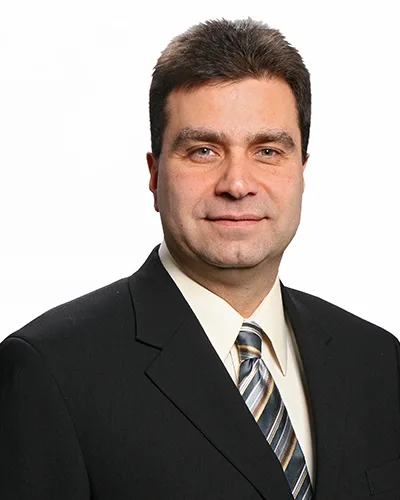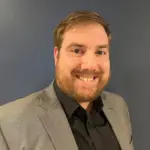V-COMM Telecommunications Engineering President Dominic Villecco discusses iBwave certification, why it matters when designing wireless systems in buildings, and why it pays to have a deep bench of engineers with high-level iBwave certifications.
What is iBwave Certification?
Villecco: Many people have heard of AutoCAD, which is the standard software that architects use to design buildings. Similarly, iBwave is the standard for in-building wireless system design. About 15 years ago there were multiple tools for in-building design. iBwave stood head and shoulders above the rest – to the point that the wireless carriers and a lot of the equipment manufacturers started to adopt iBwave as the de facto tool in the industry. It’s got a lot of power. It really helps engineers with wireless system design.
Why are there three levels of iBwave certification? And what do these different levels enable an engineer to do?
It’s like anything else with levels of certification. The first level is introductory. It means you can get some basic plots out of the software. Many people have Level 1 iBwave certification.
At V-COMM, we start with the strength and experience of our radio engineers and provide training on this powerful software, beginning with Level 1 and then progressing through Levels 2 and 3. Our engineers will say, “I’ve got this problem I am trying to solve. I need it to do more.” That’s how we know they are ready for the next level of training to understand how to get the most out of this tool.
For example, we use iBwave to help design wireless systems in subways, which are complex and harsh environments. You need a really good background in RF engineering and an understanding of how to use iBwave at a high level to solve these complicated problems.

How many iBwave-certified engineers does V-COMM have on staff?
At least 50 percent of our engineers are iBwave certified on some level with a half dozen engineers holding level 2 or 3 certifications, plus a senior engineer with the iBwave Public Safety Certification. And some of our best, brightest, and most experienced engineers working on levels 2 and 3.
Why is it important to have multiple iBwave-certified RF Engineers on staff at V-COMM?
We have multiple engineers working on multiple projects. I’ve got a hospital that I’m doing right now, which is a complicated one. We’ve got some smaller office-type buildings that are less intricate. We have subway projects that we do that are very complex, as is the airport work that we do at large airports. That’s why I need a bunch of engineers that are capable.
What is it about a hospital job, for example, that makes it so complex?
In a hospital, there are many wireless networks that connect a multitude of devices used by nurses and staff. It’s our job to make sure there’s no interference between existing networks and the new ones we’re installing.
What types of projects does iBwave design help with?
There are three main aspects: There’s cellular, Wi-Fi, and public safety wireless. There are similarities, but they’re different networks. iBwave is offering the capability to design private LTE systems now, and we’ve done a few of those as well.
Has V-COMM had any unique applications of iBwave design that wouldn’t have worked as successfully without it?
That is certainly the case with some of our subway projects. It’s a combination of having iBwave, which is the right tool, and experienced engineers to understand the problem, and then using the tool to find the proper solution.
V-COMM did design work on the PATCO High-Speed Line that connects southern New Jersey with Philadelphia. Some stations are relatively close – you can see from station to station – so you’d think that would be good. From an RF perspective, however, it’s bad because it’s not an issue of coverage; it’s an issue of interference. So, if I were an engineer with an iBwave Level 1 certification, I’d plug in all the information and see that I have great coverage everywhere in the subway. But the Level 3 engineer says, “I need to understand the interference. Even with great coverage, if I have lots of interference, I have no service.” We use iBwave to avoid what is called a wave-guide effect. That’s where an interfering signal goes down the subway tunnel like it’s a piece of cable. Again, it is a combination of our engineering expertise and using iBwave to come up with solutions to the problems that we know are there.
Some of V-COMM’s clients may not have heard of iBwave before. How does iBwave add value to them?
We have a project for an electronics manufacturing business. It’s a combination office building, with R&D and manufacturing space; It’s a few hundred thousand feet. This customer has no idea what iBwave is. What they know is – to meet the code – they need better cell service and better public safety service.
And due to the type of research and the type of manufacturing they do, these factors drive the construction requirements for the building. Perhaps they need thicker walls here and metal around that area over there. Those are things that block signals. So, we talk to them about why their building is made the way it is, and where they need service; and then input that data into iBwave to produce the system that will work in their building. Thanks to iBwave we can show them a graphic plot and say, “Here’s what we did. You’ve got this lead-lined room for whatever reason, so we put some antennas in here, we did this, we did that… Here’s what your coverage is.” When we present the design to them in this way, they see it and understand it.
What about your customers who are wireless carriers, for example, and who are fully aware of iBwave? Why is it important for them to hire a firm like V-COMM where they know there are multiple Level 2 and Level 3 engineers?
Let’s use this hospital job as an example. One carrier is going onto the system now and the others will probably follow. The first thing they ask for is the iBwave files to ensure that there’s a good level of service when their customers go to this hospital. Having this high level of capability – with designs by our level 2 and 3 engineers – gives the carriers an immediate boost of confidence that their customers will have a good experience.
We can tell when they’ve worked with lower-level iBwave-certified engineers based on the questions they ask. One example is, from an RF perspective, there’s a thing called power sharing. These systems have amplifiers with only so much power. When we have two, three, or four carriers on the network, we must divide the power. We’ve seen in the past when other engineers have said, “Here’s my coverage.” When a second carrier is added, they find that the coverage gets cut in half because they didn’t allocate the power properly because they didn’t use iBwave properly.
And of course, at that stage of the game, those modifications are a lot more expensive than if it had been done properly the first time around…
Way more expensive! And when you’re in the subways, they’re even more expensive because we have limited time to work – often there are only nighttime windows. Subways are far more expensive than a building to make changes, so you must do it right the first time.
How are your RF engineers using iBwave for Public Safety?
These public safety systems are part of the fire code with specific parameters for coverage. If you don’t do it right, the building owner won’t get a certificate of occupancy. It’s expensive to fix at that stage, but more importantly, you’re holding up the opening of the building, all because someone didn’t design the system properly.
In public safety environments, you really want to do it once and do it right because you’re at the end of the line. When we put these things in, the building is near completion. If your system doesn’t get approved, you’re holding up the occupation of the building. Some other firms have bad reputations for doing that. It’s certainly not the case with us. We have a senior engineer with the iBwave Public Safety certification who makes sure we consistently meet – and usually exceed – the codes. We build an extra margin and when we do the test with the fire marshal – or what’s called the Authority Having Jurisdiction (AHJ) – we always pass with flying colors.
We do a lot of other public safety work, so we already know most of the AHJs. That’s important because we have a good reputation with them. They know if V-COMM is doing the project, it’s going to be done right. That’s also how we get referrals and repeat business.
In addition to being V-COMM’s President, Dominic Villecco serves as President of the New Jersey Wireless Association. V-COMM is a leading provider of integrated network engineering, radio frequency engineering, and business services, with offices in Edison and Somers Point, NJ, and Exton, PA. V-COMM engineers have over 75 years of experience designing CBRS, Cellular, Public Safety, and Wi-Fi solutions. V-COMM also provides design and design/build services for In-building, In-tunnel, and other wireless telecommunications networks. For more information, call 1-800-930-4307 or visit www.vcomm-eng.com.






